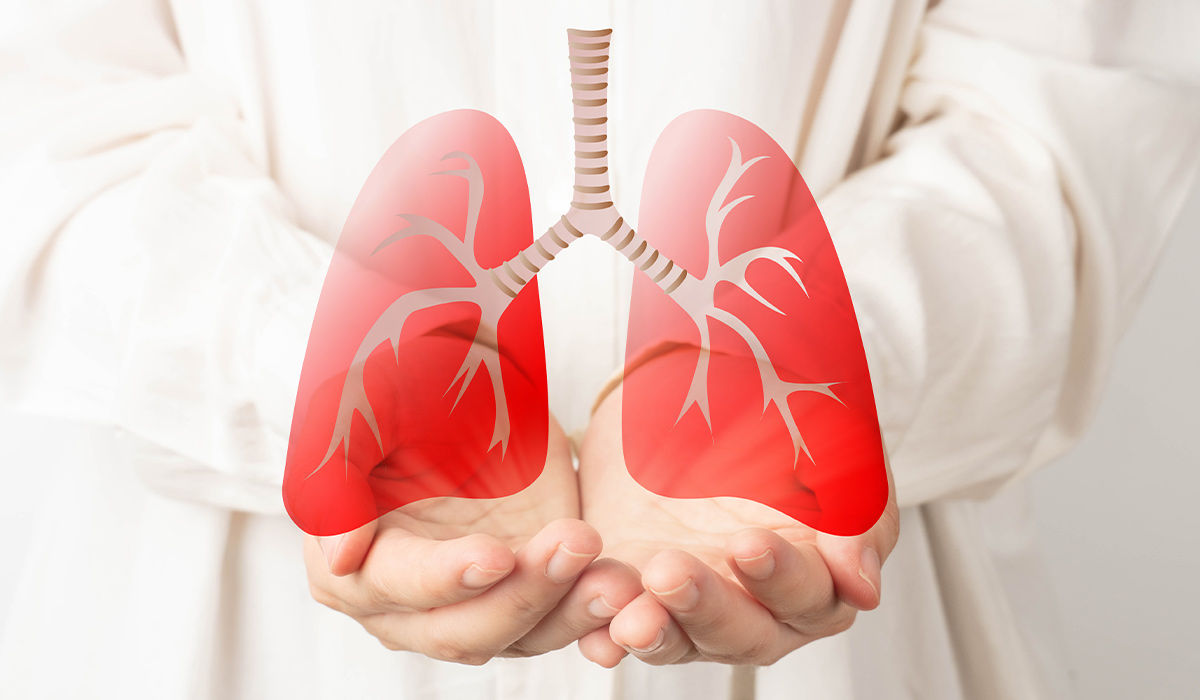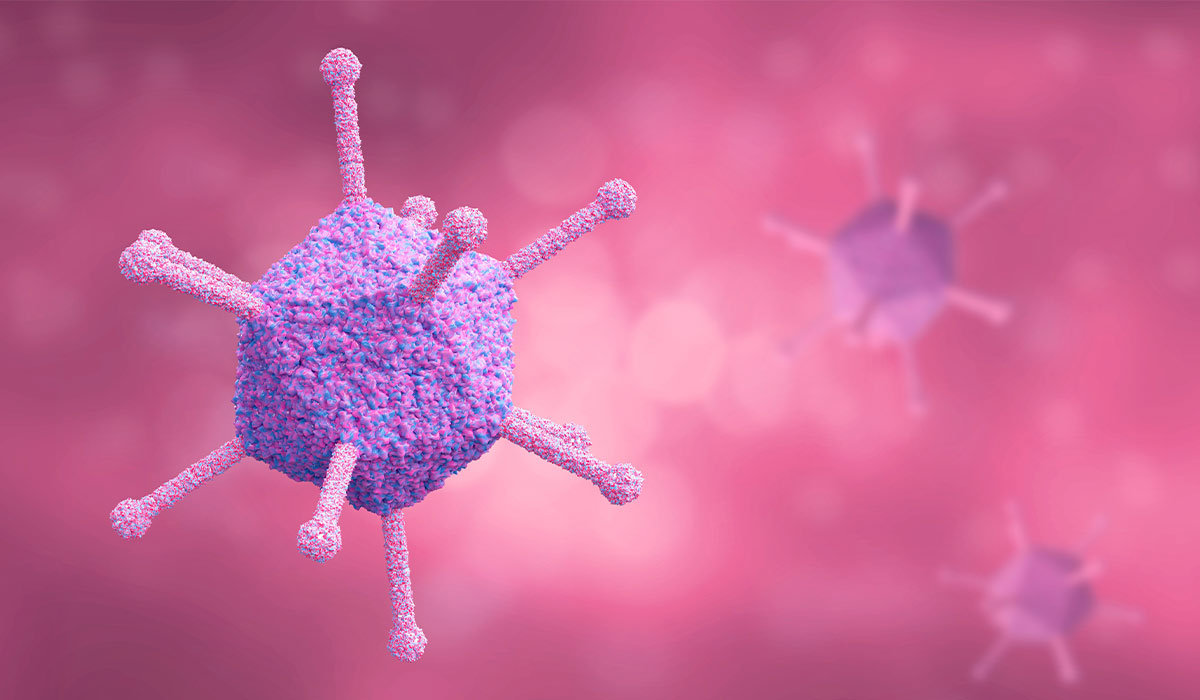Wheezing is produced when air flows through narrowed airways. It can be heard during inspiration (which is then called inspiratory wheeze) or during exhalation (then called expiratory wheeze). It may also be of a mixed nature and be heard in both phases of breathing. It may vary in intensity – from audible only when auscultated with a doctor's headphones to loud whistling audible to the naked ear.

Some wheezes may only be noticed with a stethoscope, but frequently, you can detect them with your ears. Wheezing![]() is more noticeable when you breathe out but may also be caught while you breathe in. The tone of the wheeze can differ depending on which region of the respiratory system is clogged or narrowed.
is more noticeable when you breathe out but may also be caught while you breathe in. The tone of the wheeze can differ depending on which region of the respiratory system is clogged or narrowed.
Wheezing is a symptom that can occur in various diseases rather than being specific to one. That is why its causes![]() are various. It may come with:
are various. It may come with:
Other rare but sometimes serious diseases include cystic fibrosis, bronchiectasis, primary ciliary dyskinesia, gastroesophageal reflux, swallowing disorders, interstitial lung diseases, burns of the respiratory tract, neuromuscular disorders, and vocal cord dysfunction. In these diseases, wheezing is not the primary symptom but accompanies other, sometimes severe, symptoms of the underlying disease.
Respiratory disorders in young children can very quickly lead to respiratory failure. Breathing control in an infant or newborn is of great importance. Impaired airway patency may manifest as wheezing in the newborn.
The leading causes of wheezing in infants![]() include:
include:
Less common causes of wheezing and coughing in babies include:
This symptom is more common in infants than in older children. The anatomical structure of the respiratory system in children creates a greater predisposition to narrowing the lumen of the bronchi, thus making breathing more difficult.
Parents should monitor such young children. If additional symptoms appear, such as cough, runny nose, or fever, the child's condition should be consulted with a doctor.
Children![]() are most at risk of wheezing. Their respiratory tracts are narrow and short, and the skeletons of the larynx and trachea are thin and flaccid.
are most at risk of wheezing. Their respiratory tracts are narrow and short, and the skeletons of the larynx and trachea are thin and flaccid.
The younger the child, the greater the tendency to narrow the bronchial tubes. The structure of a child's respiratory system is different than that of adults and is characterized by numerous glands, which favors greater secretion production.
A child's immune system, which is still immature, promotes wheezing.
Wheezing in a child is most often associated with:
When children experience wheezing and dry cough, it is often due to viruses rather than bacteria. These symptoms may be caused by viral laryngitis, bronchitis, or tonsillitis.
Experiencing this symptom at night in children is a common sign of asthma. It involves chronic inflammation in the respiratory tract, triggered by allergens, colds, or physical activity.
Characterized by chest tightness and coughing, these symptoms occur at night and peak in the morning.
Treatment for a wheezing cough in a child depends on its cause. Bacterial infections may require antibiotics, while asthma may call for decongestants. Inhalation therapy can also provide additional support.
Wheezing in adults may occur when inhaling or exhaling. It is a characteristic continuous high-frequency sound. Narrowed airways inhibit proper airflow. Such changes are detected using a stethoscope, but in some cases, they are so clearly audible that there is no need to use additional devices.
Coughing and wheezing in adults often accompany diseases such as:
Old age![]() favors more frequent and longer-lasting respiratory infections. With age, lung capacity decreases, bronchioles collapse, and problems with secretion expectoration occur.
favors more frequent and longer-lasting respiratory infections. With age, lung capacity decreases, bronchioles collapse, and problems with secretion expectoration occur.
When you engage in physical activity, you might experience exercise-induced asthma![]() , a specific type of asthma that occurs during or right after exercising. It isn't the only symptom of this condition. Physical activity can also lead to shortness of breath, coughing, and a heavy feeling in the chest.
, a specific type of asthma that occurs during or right after exercising. It isn't the only symptom of this condition. Physical activity can also lead to shortness of breath, coughing, and a heavy feeling in the chest.
Physical exercise can significantly worsen the condition of people who smoke, often leading to wheezing. Breathing issues can also be linked to infections. When you have a cold, the weakened respiratory tract and air flow difficulties can cause intense breathing problems, especially during physical activity.
Wheezing that occurs during and after exercise may also indicate a severe allergy. This symptom of allergies points to breathing problems and narrowing of the airways.

Both adults and children often experience wheezing when they lie down, especially those with asthma![]() . This wheezing tends to worsen during sleep and in the morning. Patients describe it as “heavy breathing” and often experience breathing difficulties along with a feeling of anxiety. Children with nighttime wheezing may wake up and sit up to alleviate symptoms.
. This wheezing tends to worsen during sleep and in the morning. Patients describe it as “heavy breathing” and often experience breathing difficulties along with a feeling of anxiety. Children with nighttime wheezing may wake up and sit up to alleviate symptoms.
The wheezing during sleep is more intense than during waking hours, and symptoms worsen when lying down. While asleep, the airways narrow, causing airflow resistance and wheezing. Many people also experience coughing during this time, further narrowing the respiratory tract.
Consult your healthcare provider if your wheezing is new, if it keeps coming back, or if you experience the following signs:
Wheezing may occur in emergencies, e.g., as a result of a bite, aspiration of a foreign body, or an exacerbation of asthma. The diagnosis is then based solely on clinical assessment because the most important thing is to immediately apply the appropriate treatment to restore airway patency.
In the diagnosis and treatment of foreign body impaction and aspiration of food content, bronchoscopy is used – thanks to it, the foreign body can be located in the respiratory tract and immediately removed, and the residual contents can be sucked out, thus providing relief to the patient.
A more extensive diagnosis is initiated if the patient is not in a condition requiring urgent intervention. Gathering information through a patient interview is crucial, involving discussions about symptom duration, severity, triggers, alleviating factors, and medications taken.
Following identifying abnormal breath sounds (such as wheezing) and the initial diagnosis of respiratory problems![]() , targeted additional tests are prescribed for further evaluation.
, targeted additional tests are prescribed for further evaluation.
In pulmonary medicine, spirometry, or lung function tests, are fundamental diagnostic tools. They allow the assessment of lung volume, capacity, and airflow dynamics during breathing phases, aiding in the diagnosis of asthma and chronic obstructive pulmonary disease and pinpointing the origin of lung wheezing.
When audible breathing and whistling sounds indicate a suspected airway-obstructing tumor, a chest X-ray or tomography is conducted, especially if an extrathoracic tumor is suspected. Bronchoscopy may also be beneficial.
Individuals suspected of laryngeal papillomas or vocal cord paralysis should be referred for an ear, nose, and throat (ENT) consultation. During this visit, the larynx will be meticulously examined using specialized equipment and expertise.

Treatment of wheezing![]() is not about removing the symptom, but about finding the cause of the problem. Wheezing may appear in many diseases.
is not about removing the symptom, but about finding the cause of the problem. Wheezing may appear in many diseases.
Chronic wheezing during breathing associated with asthma or COPD requires treatment of appropriate diseases, which involves the administration of drugs that alleviate symptoms and reduce the number of exacerbations.
Subglottic laryngitis and infectious mononucleosis require symptomatic treatment – appropriate air humidification, maintaining optimal temperature (stridor in subglottic laryngitis may even disappear completely after exposure to cold air) – these are viral infections that (if uncomplicated by bacterial infection) the body must fight on its own.
Diagnosing a tumor triggers a whole series of further diagnostic procedures, thanks to which it is possible to determine the nature of the lesion (benign or malignant) and implement appropriate treatment (surgical, oncological).
In emergencies, the most important thing is to open the airway immediately:
Given the rising prevalence of respiratory illnesses, prioritizing prevention is crucial.
The central rule is to steer clear of exposure to infectious agents nearby. For chronic respiratory conditions, it's vital to minimize contact with tobacco smoke, both actively and passively. Encouraging smokers to kick the habit is imperative.
Additionally, it's crucial to avoid inhaling polluted air laden with harmful particles. Disseminating knowledge about the causes of respiratory diseases – including risk factors, symptom recognition, and treatment methods – is essential for promptly identifying warning signs and implementing appropriate treatments.
Remember the basic rules of respiratory hygiene![]() :
:
As part of respiratory disease prevention, we cannot forget about appropriate conditions in closed rooms. It is advisable to air them frequently, keep them clean (dust them off or change the bed linen regularly), and ensure the air is adequately humidified.
Table of Contents

Asthma is a lung disease that can affect anyone, regardless of age. It occurs because of the inflammation of the… read more »

Cough is a natural, necessary reflex that protects the body from factors such as germs and pollens. When it is… read more »

Chronic obstructive pulmonary disease, a condition commonly known as COPD, is the third most frequent cause of death in the… read more »

Lung Cancer begins in cells lining breathing entries, regularly starting with bronchial tubes or minor discuss sacs. It may be… read more »

Pneumothorax is a condition that develops as a result of air entering the pleural cavity. What are the causes and… read more »

Atelectasis is a lung condition in which parts of the alveoli, tiny air sacks in the lung, lose air. When… read more »

A pulmonologist is a medical doctor who specializes in diagnosing and treating diseases of the respiratory system, which includes the… read more »

Hypercapnia is a condition in which the partial pressure of carbon dioxide in our blood is increased. This can be… read more »

Croup is a common respiratory disease It is often seen in children under the age of 5 years. Learn about… read more »